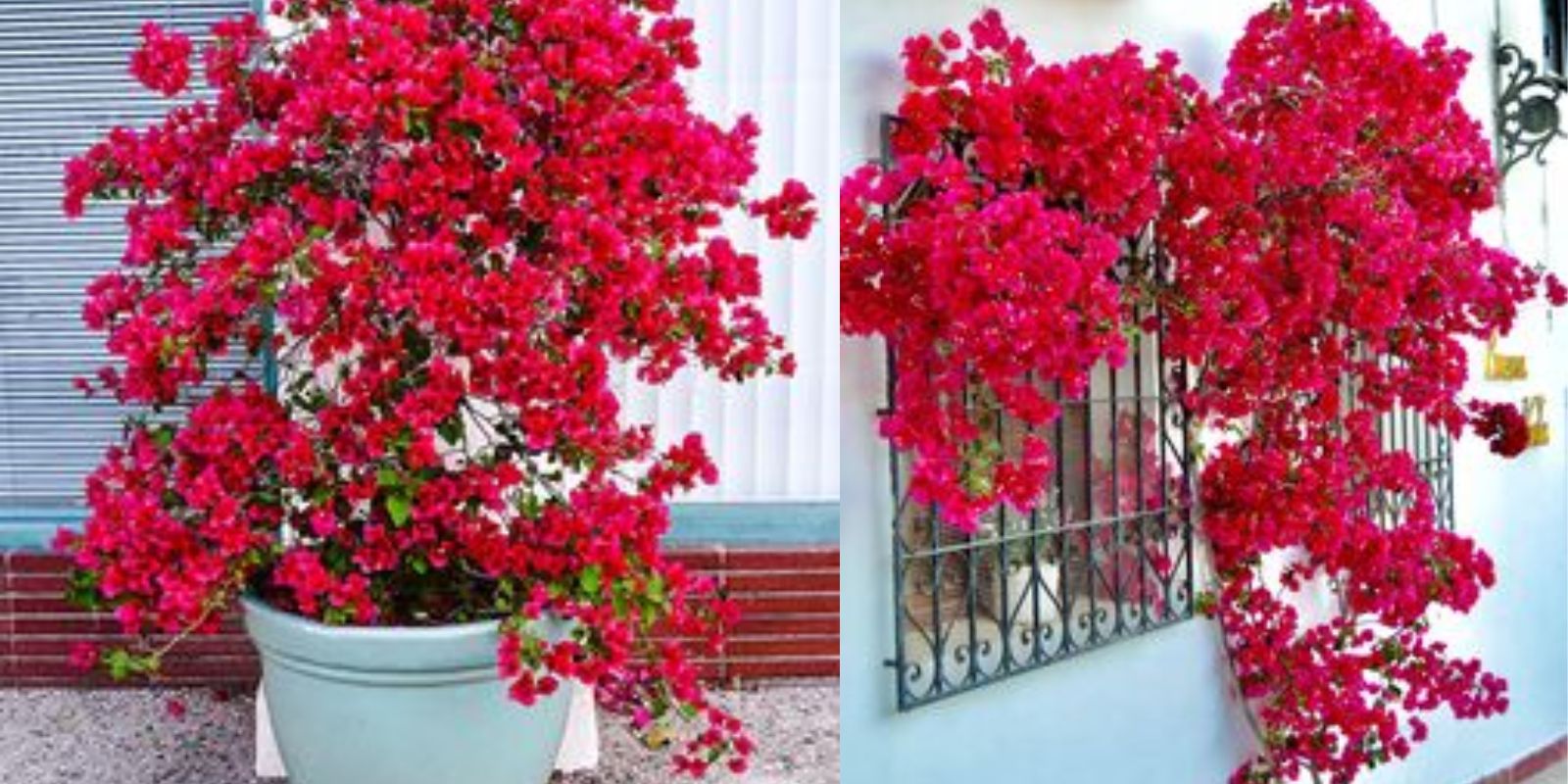Introduction
Bougainvilleas are celebrated for their dazzling displays of vibrant colors, which adorn gardens and landscapes in warmer climates around the world. These tropical vines are known for their papery bracts that come in shades of pink, purple, red, orange, and white, often overshadowing their small, inconspicuous flowers. Growing bougainvilleas in pots offers a versatile way to enjoy their beauty in regions with cooler climates or limited outdoor space. With the right care and attention, you can encourage these stunning plants to bloom profusely throughout the year, transforming your patio, balcony, or garden into a vibrant haven.
Choosing the Right Pot
When cultivating bougainvilleas in pots, selecting the appropriate container is crucial for their health and growth. Opt for a pot that is large enough to accommodate the plant’s root system and provide ample room for development. A pot with a diameter of at least 18-24 inches (45-60 cm) is recommended, as bougainvilleas appreciate space for their roots to spread. Ensure the pot has good drainage holes to prevent waterlogging, which can lead to root rot—a common issue with these plants.
Selecting the Right Soil
Bougainvilleas thrive in well-draining soil that allows water to pass through freely. Use a high-quality potting mix designed for flowering plants or create your own mix by combining equal parts of sandy soil, perlite, and compost. This blend ensures good drainage while providing essential nutrients for healthy growth. Avoid heavy soils that retain moisture, as they can suffocate the roots and lead to fungal problems.
Planting the Bougainvillea
When planting bougainvilleas in pots, handle the root ball carefully to avoid damaging the delicate roots. Plant the bougainvillea at the same depth it was growing in its nursery container, ensuring the root ball is well-covered with soil. Gently firm the soil around the base of the plant to provide stability. After planting, water the bougainvillea thoroughly to settle the soil and hydrate the roots.
Placement and Sunlight
Proper sunlight is crucial for bougainvilleas to thrive and bloom abundantly. Place the pot in a location where the plant can receive full sun for at least 6-8 hours per day. Bougainvilleas are sun-loving plants that require ample light to produce their signature colorful bracts. Inadequate sunlight can result in reduced flowering and weak growth. If you live in a region with intense heat, provide some afternoon shade to prevent leaf scorching and maintain plant health.
Watering Routine
Establishing a consistent watering routine is essential for the health of bougainvilleas in pots. These plants prefer slightly dry conditions and are tolerant of drought once established. Water deeply when the top inch (2.5 cm) of soil feels dry to the touch, allowing excess water to drain freely from the bottom of the pot. Avoid frequent, shallow watering, as this can lead to waterlogged soil and root rot. During hot summer months, bougainvilleas may require more frequent watering to maintain hydration.
Fertilizing Schedule
To encourage continuous blooming and vigorous growth, fertilize bougainvilleas regularly during the growing season. Use a balanced, water-soluble fertilizer formulated for flowering plants. Begin fertilizing in early spring as new growth emerges and continue every 4-6 weeks until early fall. Reduce fertilization in late fall and winter when growth slows down. Over-fertilizing can result in excessive foliage growth at the expense of flowering, so follow the manufacturer’s instructions for application rates.
Pruning and Training
Regular pruning is essential for maintaining the shape, health, and flowering potential of bougainvilleas in pots. Prune the plants after each blooming cycle to remove spent flowers, dead or damaged branches, and excessive growth. Use sharp pruning shears to make clean cuts just above a leaf node or lateral branch. Training bougainvilleas to grow on trellises or supports can enhance their ornamental value and prevent sprawling growth. Prune with caution to avoid removing too much foliage, as this can reduce flowering in the following season.
Overwintering and Protection
In regions with cold winters, bougainvilleas grown in pots may require protection from frost and freezing temperatures. Before the onset of winter, gradually reduce watering and fertilization to allow the plant to enter a dormant state. Move the pots to a sheltered location, such as a garage or greenhouse, where they can receive protection from harsh winter conditions. Alternatively, cover the plants with frost cloth or bring them indoors to a bright, cool room until the threat of frost has passed.
Benefits of Growing Bougainvilleas in Pots
- Versatility: Potted bougainvilleas can be grown in various settings, including balconies, patios, and small gardens, enhancing outdoor living spaces with their vibrant colors and lush foliage.
- Seasonal Interest: With proper care, bougainvilleas can bloom continuously throughout the year in mild climates or during the warmer months in cooler regions, providing long-lasting visual interest.
- Container Gardening: Growing bougainvilleas in pots allows gardeners to control soil conditions, water levels, and sunlight exposure, making it easier to meet the plant’s specific needs for optimal growth and flowering.
Conclusion
Growing bougainvilleas in pots is a rewarding endeavor that allows you to enjoy these spectacular plants regardless of your garden’s size or climate. By following these guidelines for potting, care, and maintenance, you can cultivate healthy bougainvilleas that bloom profusely and add a burst of color to your outdoor space. Whether you’re a beginner gardener or an experienced enthusiast, potted bougainvilleas offer endless possibilities for creating a vibrant and flourishing garden oasis. Start growing bougainvilleas in pots today and discover the joy of cultivating these iconic plants in your own outdoor sanctuary.

